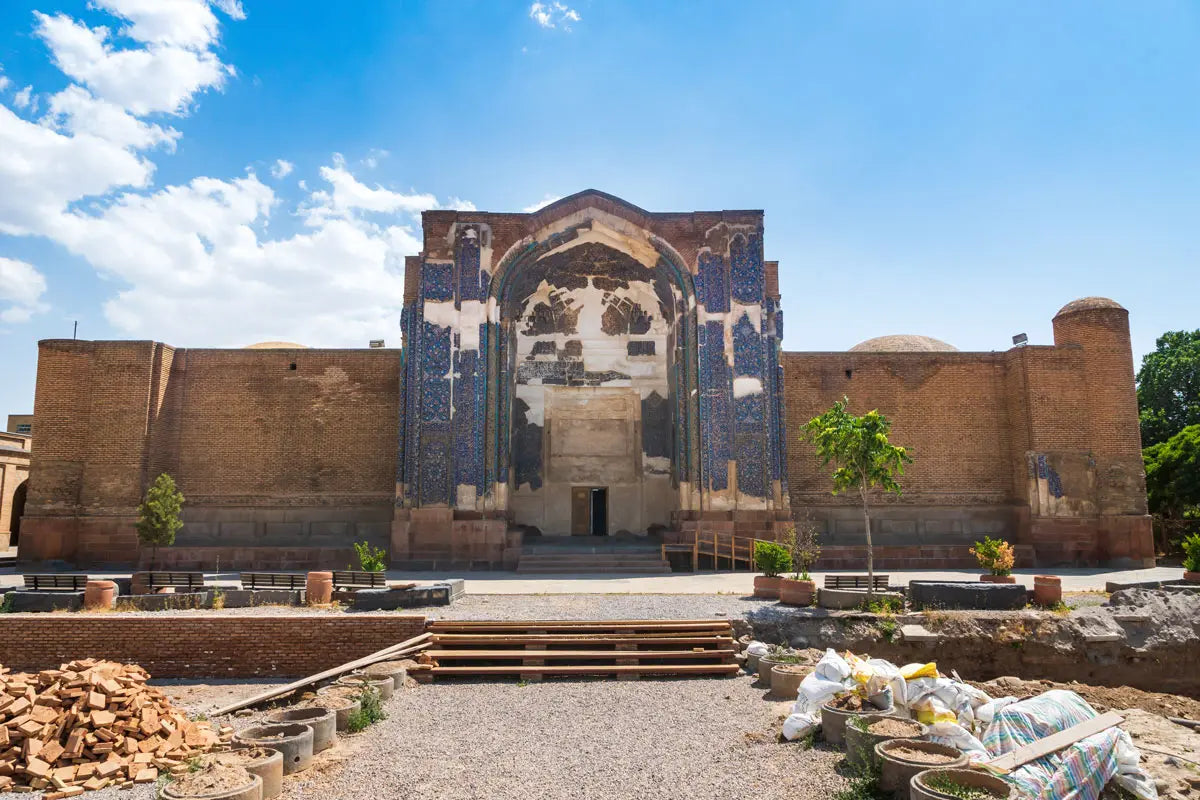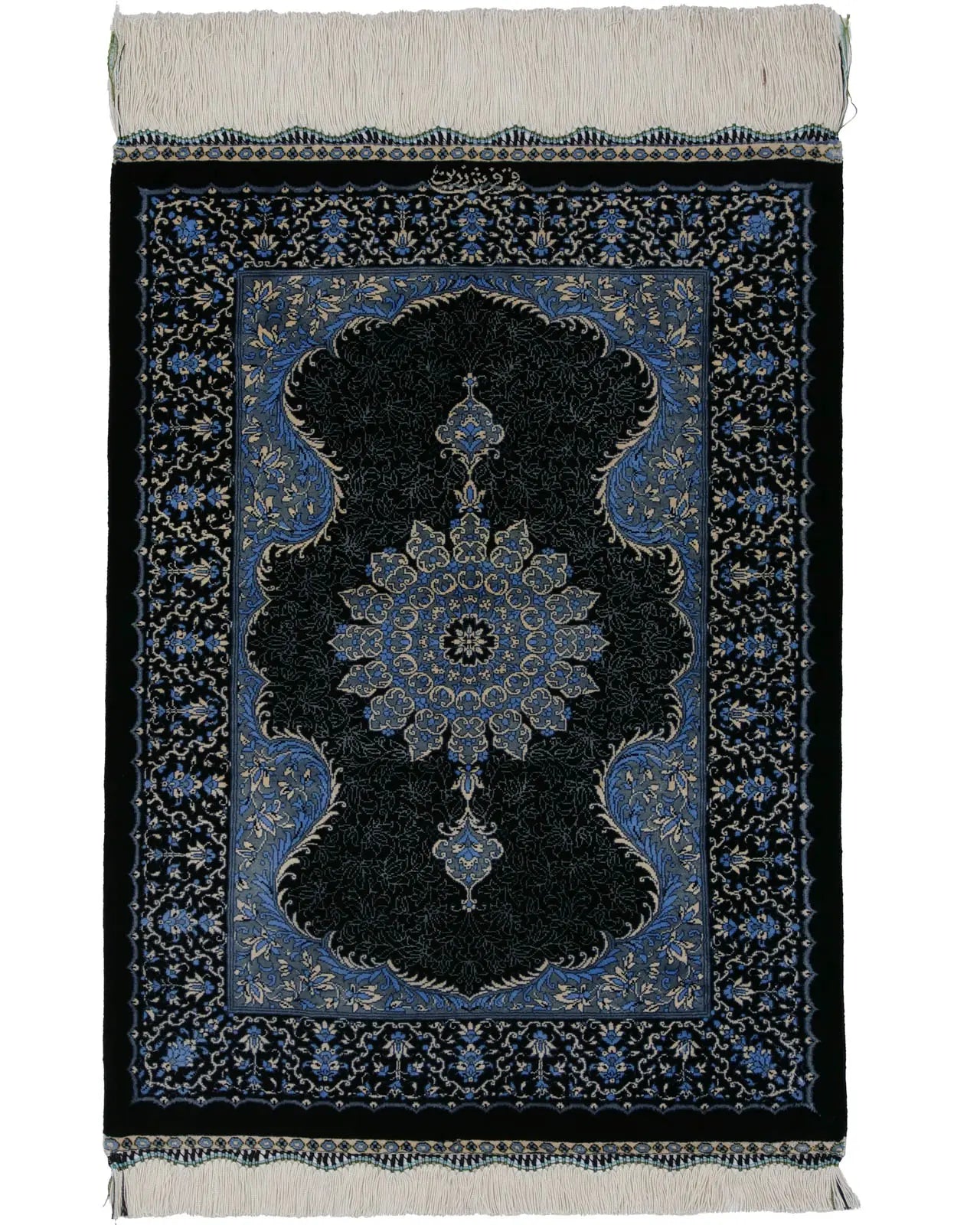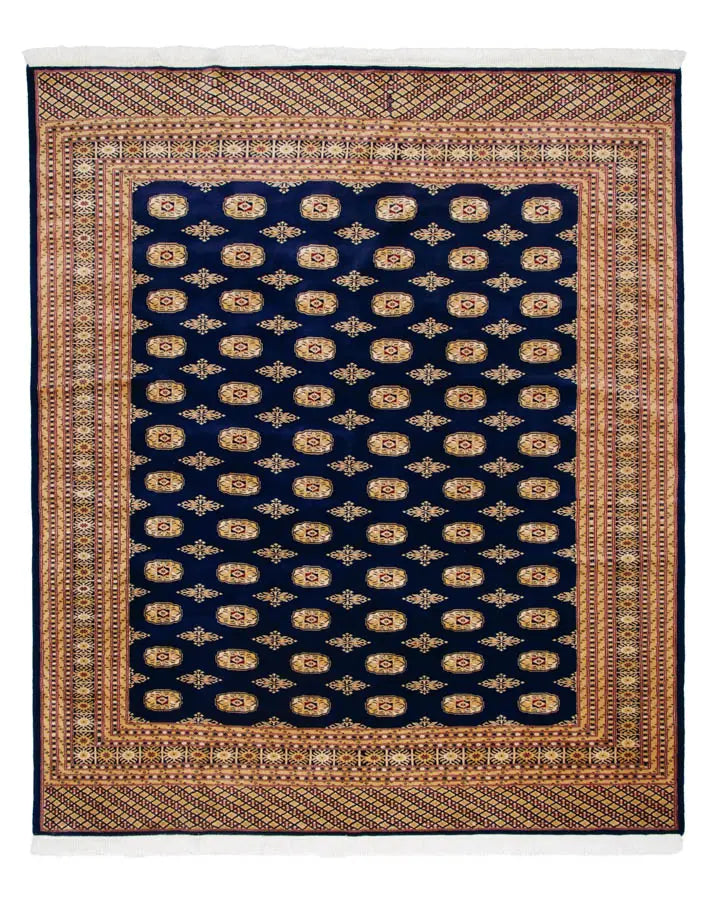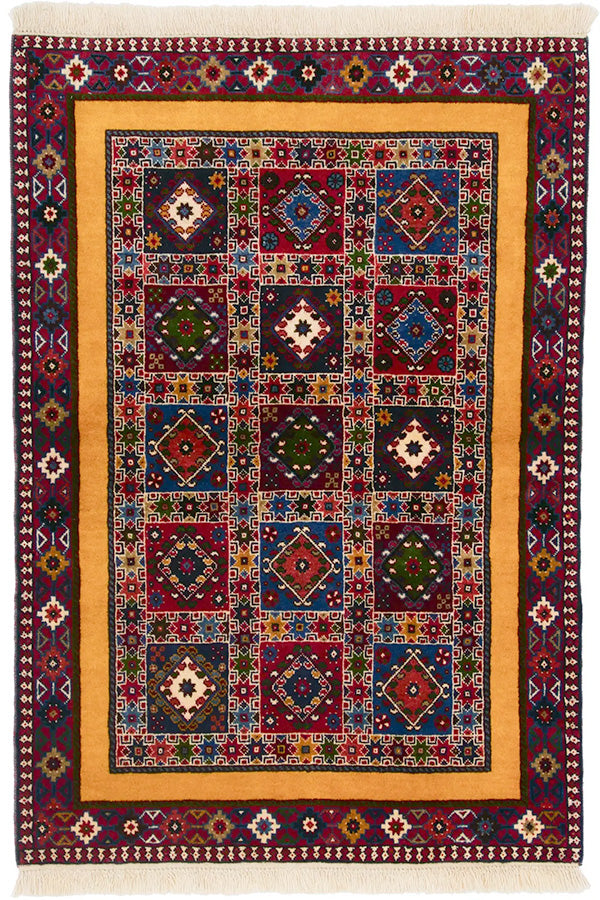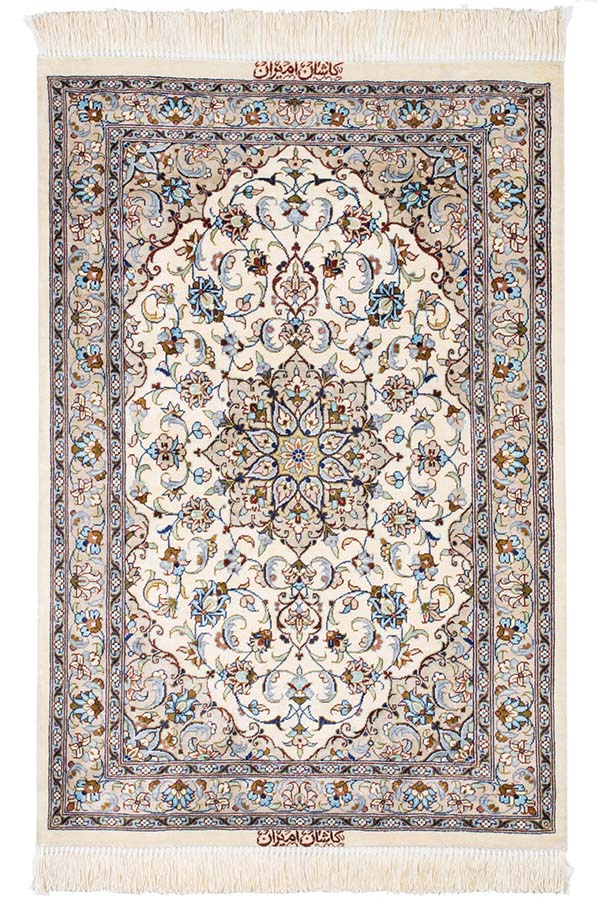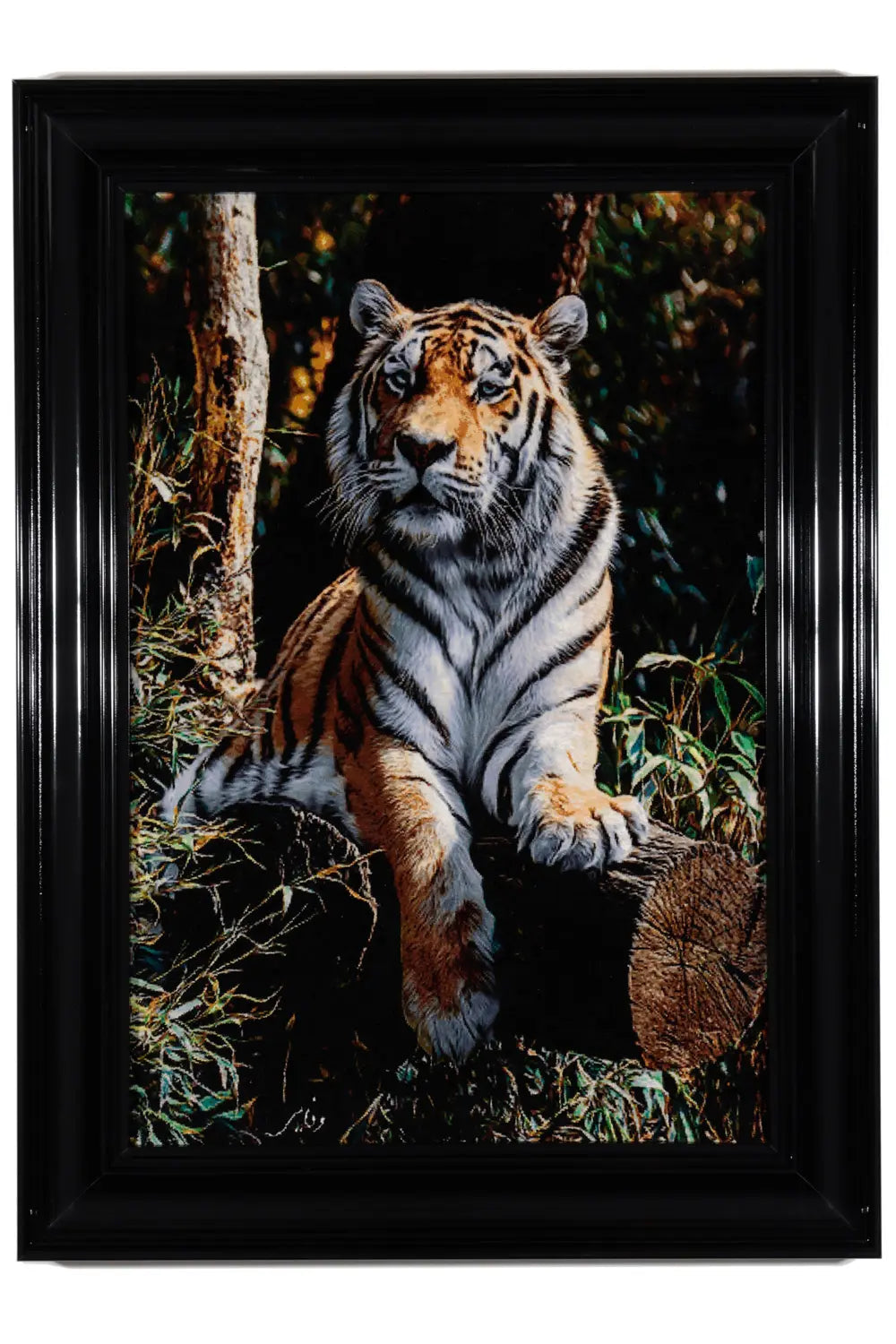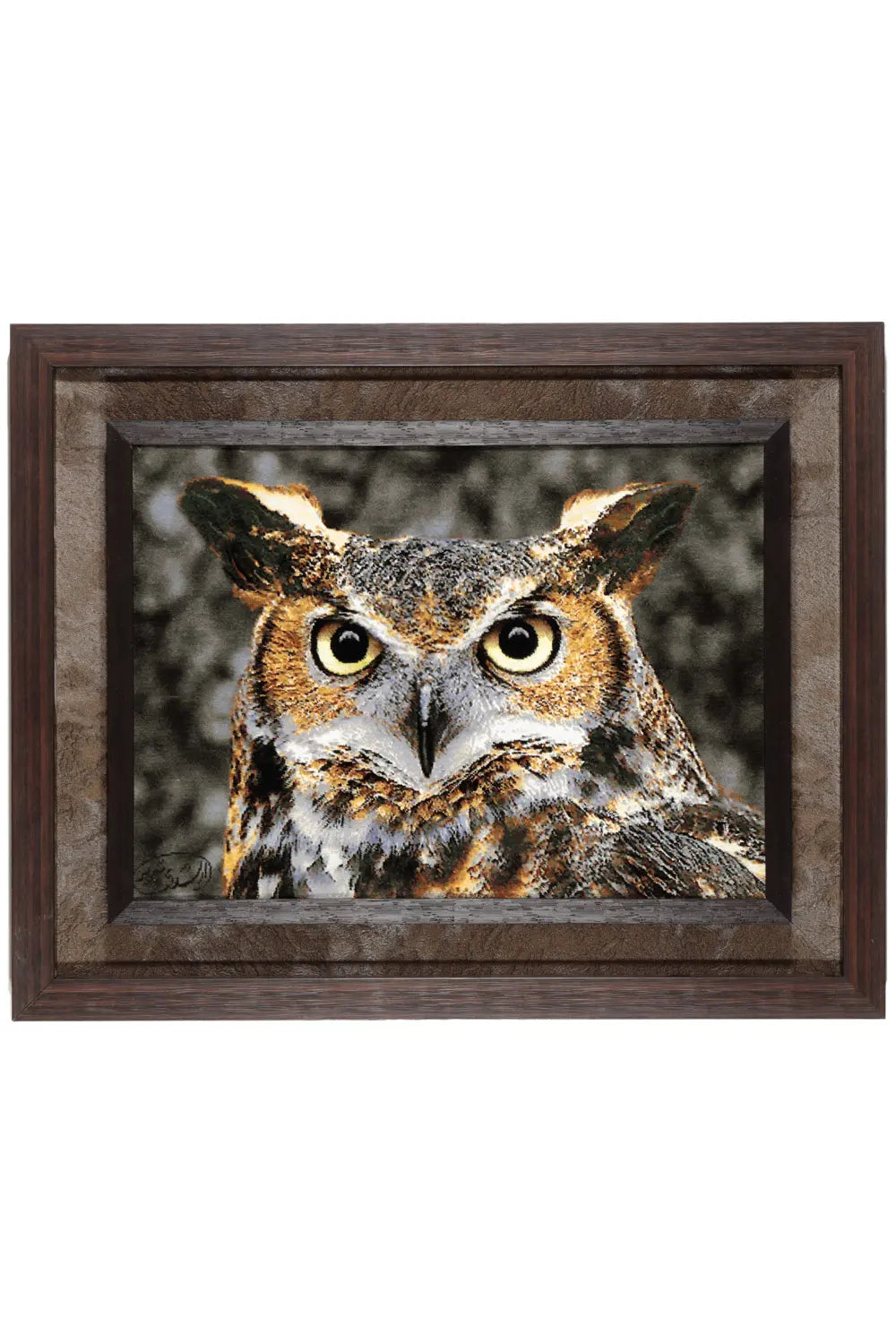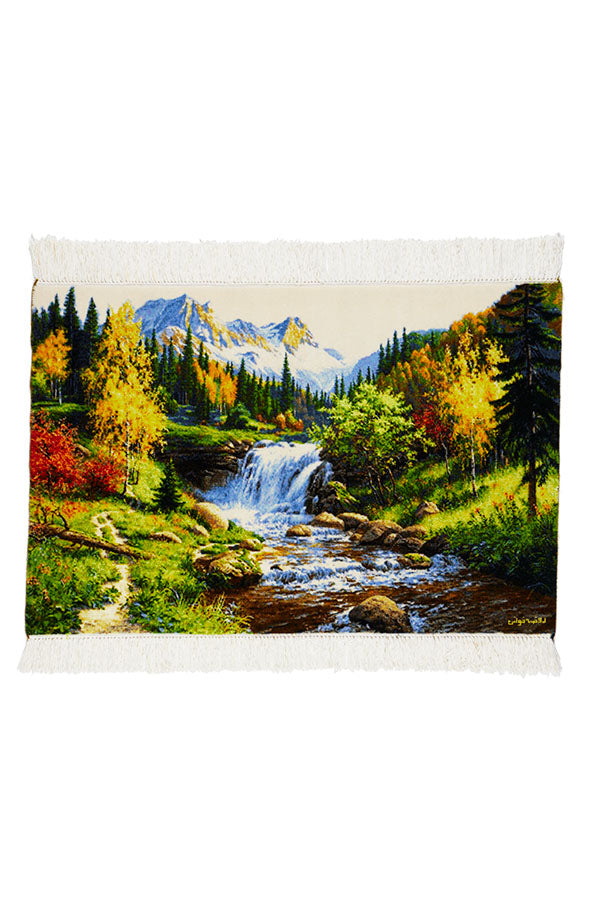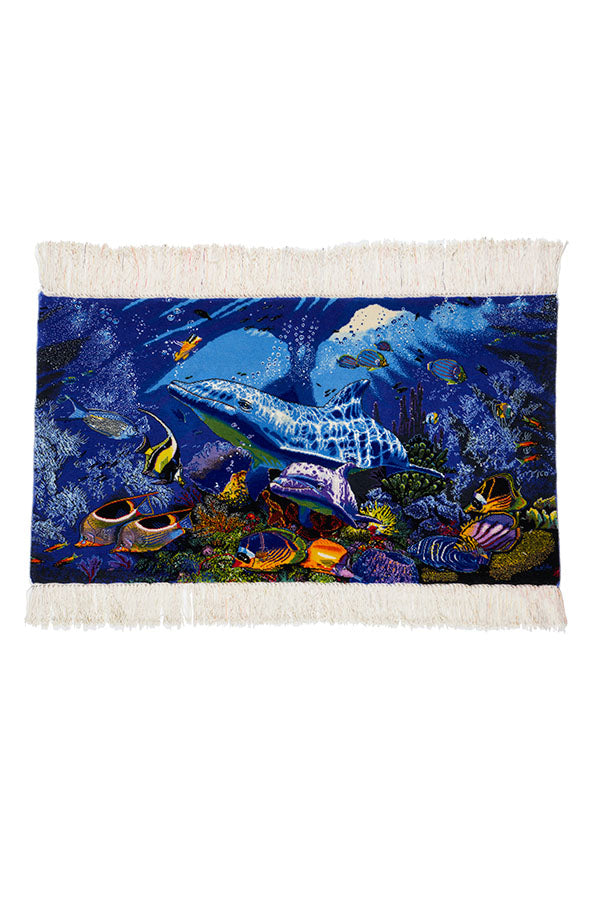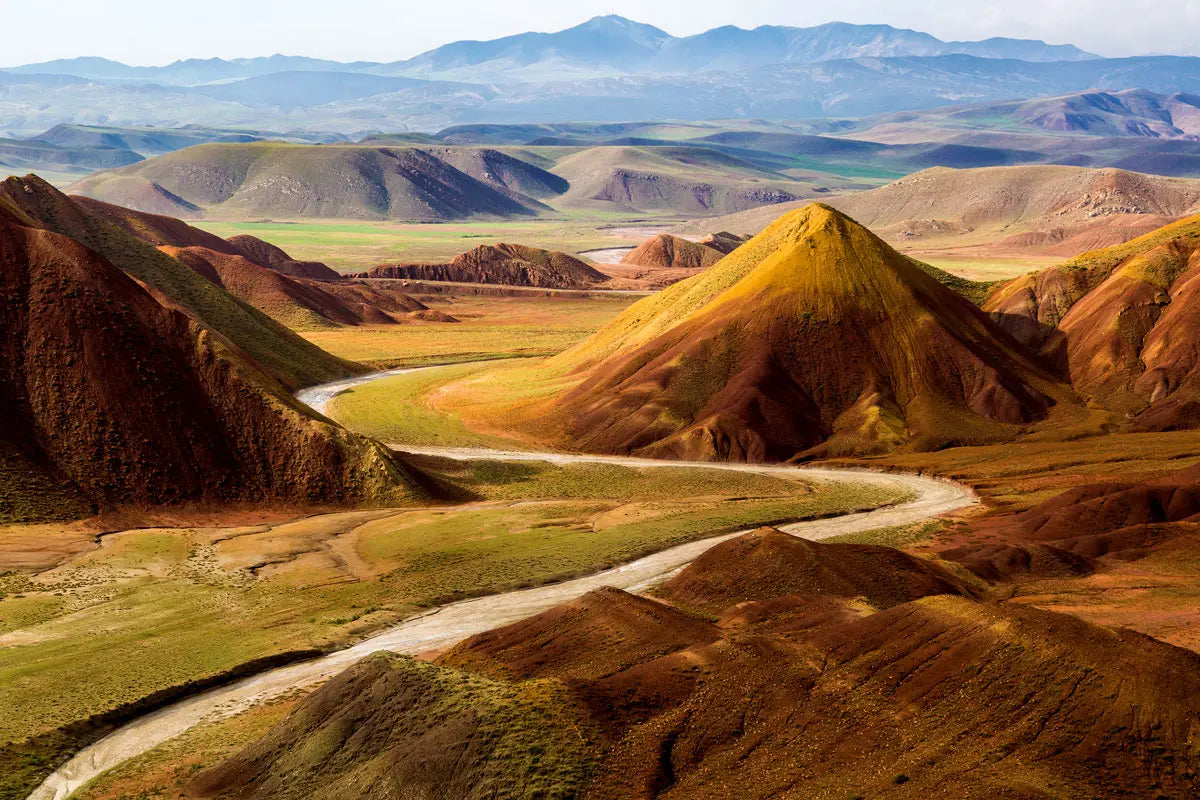
Tabriz
Type: Persian carpet
Location: Northern Iran (formerly Persia)
Knot Density: 120,000 - 1,000,000 knots per square meter
Features: High density knots, medallion and floral pattern in the center
Pile: high quality wool
Persian carpets from Tabriz are high-end handwoven rugs crafted in the city of Tabriz, located in the Azerbaijan region of northwestern Iran. Renowned for their intricate weaving and exquisite designs, these carpets are highly valued worldwide and recognized as one of the five major types of Persian carpets. Tabriz has long been a center for carpet weaving and is so esteemed that the World Crafts Council (WCC) has designated it as a “World City of Carpet Weaving.”
Representative Designs
Tabriz carpets showcase a wide array of design motifs, but some of the most iconic patterns include the following:
・Herati (Mahi) Pattern – This repeating design features a central diamond shape surrounded by four leaves. The leaves often resemble fish, which is why the pattern is also called "Mahi" (fish in Persian). Tabriz is especially famous for this motif, and versions with particularly fine detail are referred to as "Raj-e Mahi" (small fish).

・Medallion (Lachak-Toranj) Pattern – This classic layout features a large circular or polygonal medallion (Toranj) in the center of the carpet, with quarter-medallion motifs (Lachak) in each corner. This is a quintessential Persian carpet composition and has long been favored in Tabriz.
・Nature and Botanical Motifs – Common themes include vases filled with flowers, Tree of Life compositions, and depictions of lush garden scenes symbolizing paradise. These designs reflect a strong connection to nature.
・Paisley (Boteh) Pattern – Shaped like pinecones or flame droplets, the paisley motif (Boteh) is considered a sacred symbol of life in Zoroastrianism and is widely used in Persian design. In Tabriz, this motif has gained popularity in modern patterns, often arranged symmetrically in the background or used as decorative borders.
In addition to these motifs, Tabriz is home to many traditional patterns with unique names, such as Mostofi and Mina Khani (a floral medallion repeated in circular formations). This rich variety of designs is one of the reasons why Tabriz is often called a "treasure trove of carpet design."
Location and Historical Background of Tabriz
Tabriz is a highland city located at an altitude of approximately 1,360 meters in northwestern Iran, south of the Caucasus Mountains. It has long been a key hub for East-West trade, with a history dating back to the Sassanid Empire (3rd century). In the 14th century, it served as the capital of the Mongol Ilkhanate, and in the 19th century, it flourished as a commercial center in Iran. This rich historical context provided fertile ground for the development of Persian carpet weaving as a refined craft in Tabriz.
Tabriz has one of the longest-standing traditions of carpet weaving in all of Persia. The craft reached its artistic peak during the Safavid dynasty (12th–16th centuries), when numerous masterpieces were produced in royal and aristocratic workshops in the city.
In the late 19th century, the Persian carpet industry, which had temporarily declined, was revived thanks to the efforts of Tabriz merchants. To meet the demands of European and American markets, Tabriz became a pioneer in adopting new designs and color schemes, inspiring other carpet-producing regions such as Kashan, Kerman, and Hamadan to follow suit. As a result, Persian carpets grew into a global export industry—with Tabriz leading the way in combining tradition with innovation.
Knot Density
One of the key indicators of a Persian carpet’s quality is knot density, which refers to how finely the carpet is woven. Tabriz carpets are known for their high knot density and intricate craftsmanship.
In Tabriz, the fineness of the weave is traditionally measured using the "Raj" unit, which counts the number of knots per 7 cm of width. Standard Tabriz carpets begin at around 30 Raj (low to medium quality), with high-end pieces ranging from 50 to 70 Raj, and the finest reaching up to 110 Raj. For example, a 30 Raj carpet has approximately 250,000–300,000 knots per square meter, while a 110 Raj carpet can contain several million knots per square meter.
The higher the number of knots, the more detailed the pattern can be, directly reflecting the quality and precision of the craftsmanship. Even relatively simple Tabriz designs can reach around 400,000 knots per square meter, which is significantly higher than carpets from many other regions.
Another hallmark of Tabriz and the broader Azerbaijan region is the use of the Turkish knot (a symmetrical double knot), which is more durable and tightly secured than other types. Combined with the high knot density, this knotting method contributes to the strong and durable weave of Tabriz carpets.
Materials Used
Tabriz Persian carpets are made primarily from natural fibers such as wool, silk, and cotton. Each material brings specific characteristics that influence the texture, durability, and overall quality of the rug.
・Wool – Wool is the primary material in Tabriz carpets. Particularly prized is “kork wool,” a fine, soft wool taken from lambs, which allows for exceptionally delicate weaves and a smooth feel. Wool is resilient and elastic, making it ideal for daily use, and it holds dye well, producing vivid, long-lasting colors. Tabriz weavers carefully select high-quality wool yarns to create carpets that are both richly detailed and warm in texture.
・Silk – Silk adds a luxurious sheen and smoothness, often used to accent specific details of the design. For example, light-colored silk threads might be woven into floral outlines or highlights to make the patterns stand out. In the most intricate carpets, not only are wool and silk blended, but silk is sometimes used entirely, including in the warp and weft, to create fully silk rugs.
・Cotton – Cotton threads are mainly used in the warp and weft (the structural base) of the carpet. In urban weaving centers like Tabriz, strong cotton warp threads are standard, providing durability and shape retention. Cotton offers excellent resistance to stretching and environmental changes, helping the carpet maintain its dimensions over time. Many larger or utilitarian Tabriz carpets use cotton for both the warp and weft.
As explained in the sections above, Tabriz carpets are known for their sturdy structure and high practicality thanks to their use of premium wool and cotton, as well as their exceptionally dense knots.
With tightly packed knots, Tabriz rugs are highly resistant to wear and tear. They retain their beauty even in high-traffic areas like living rooms and entryways, and with proper care, they can be passed down through generations. These "lifetime" rugs are a worthwhile investment in home décor. Long before the advent of underfloor heating, wool rugs offered warmth in winter and moisture control in summer, making them comfortable all year round. Their resistance to dirt and ability to be cleaned and restored make them ideal for everyday use.
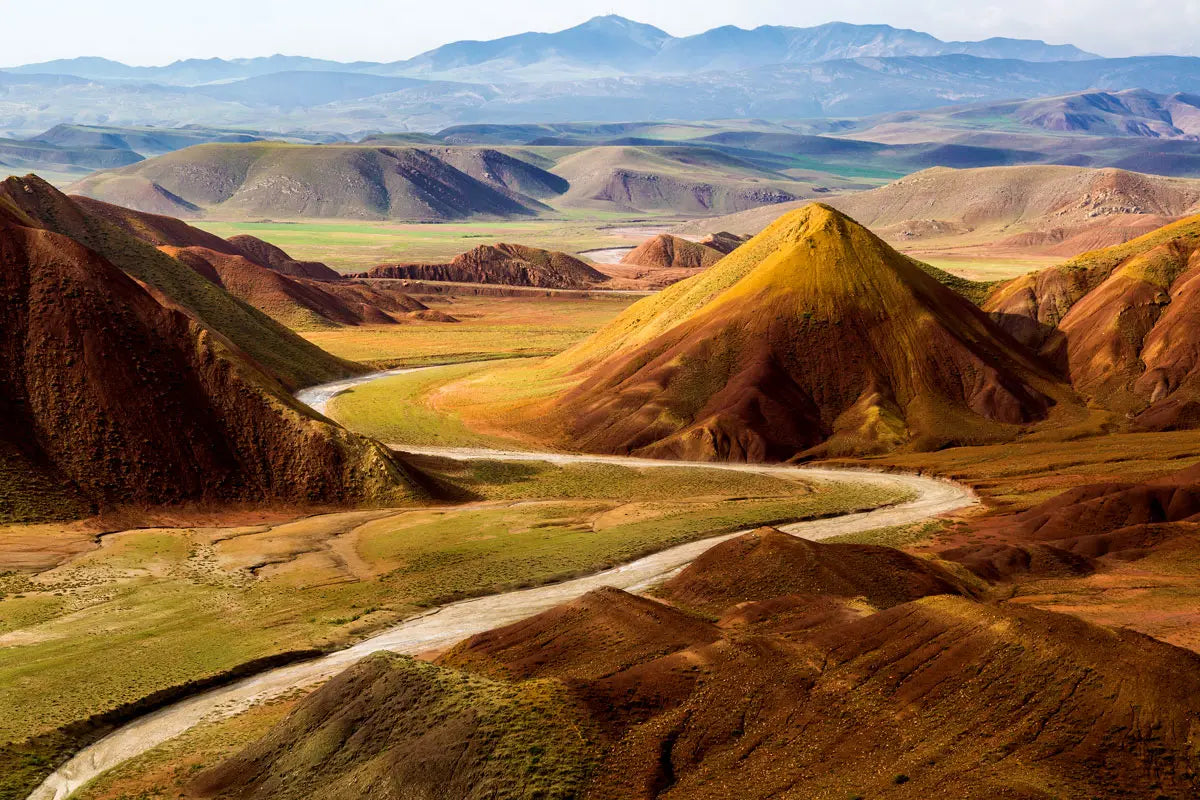
"Ala Dag Lal" (Colorful Mountains)
